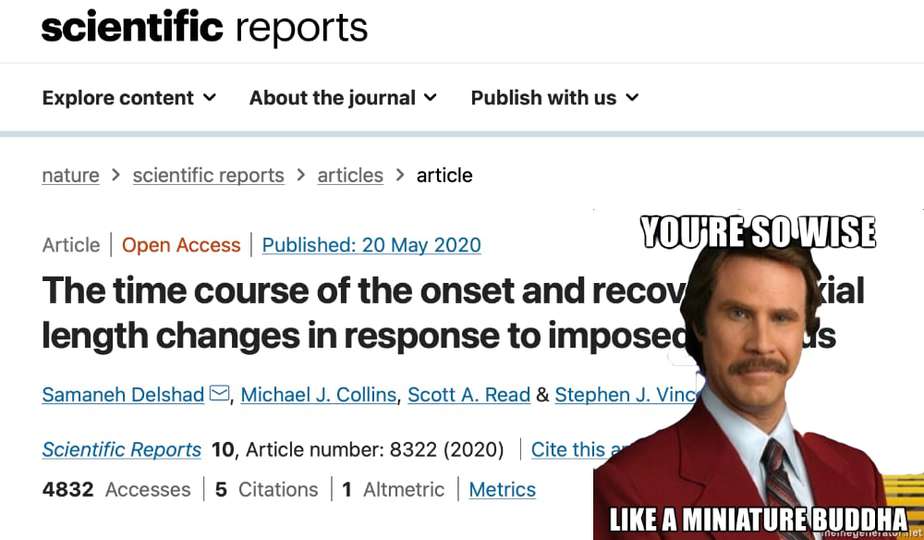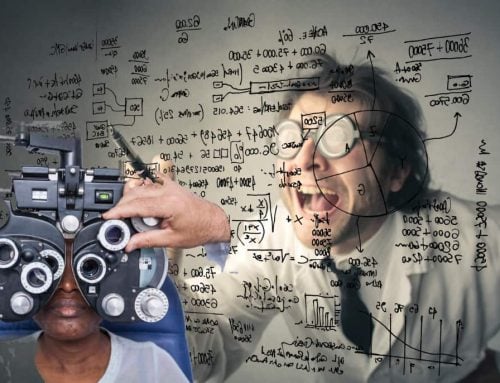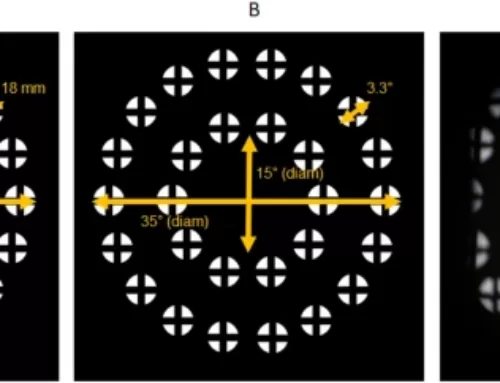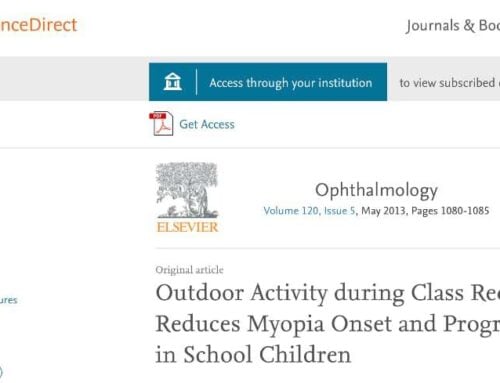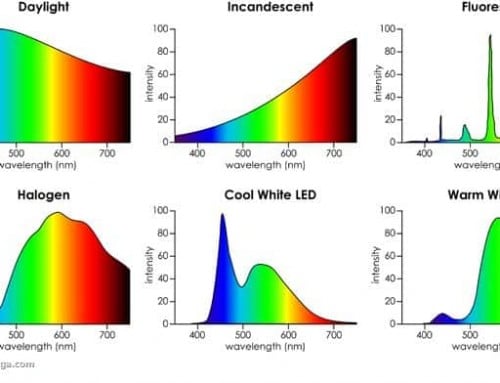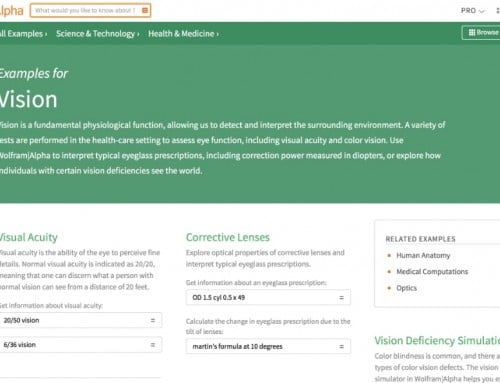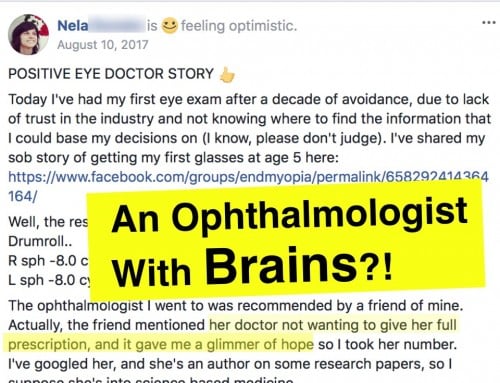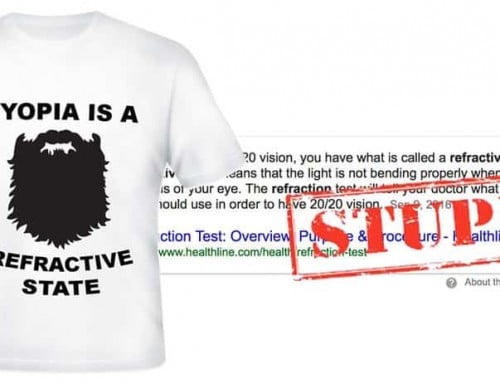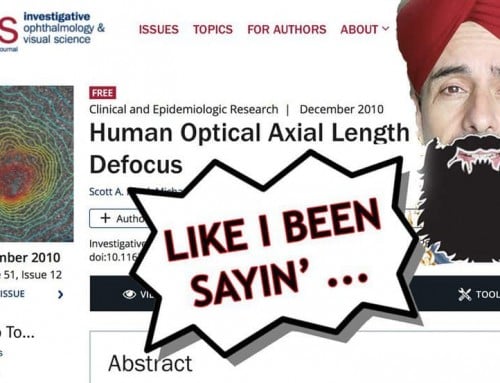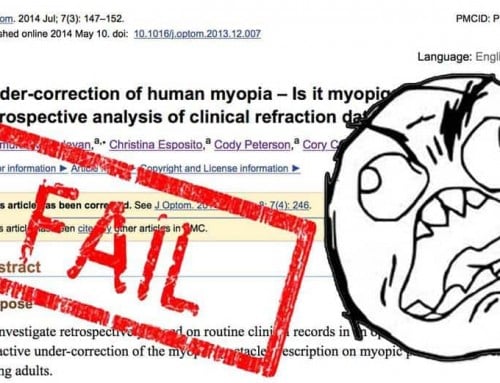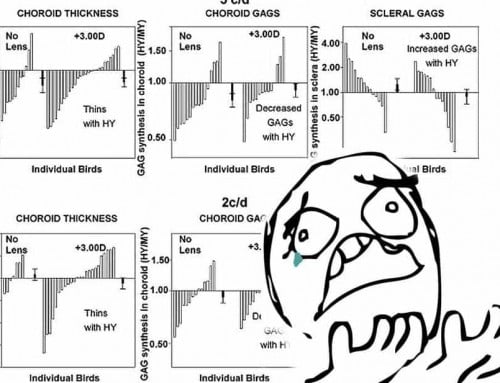So people ask, how long does it take to make improvements and be able to reduce?
And of course thine wholey beard proclaims infallibly, it taketh 3-4 months before you can reduce diopters. Any changes sooner than that, are optimistic and probably based on you wishing for a change that the biology hasn’t implemented full, just yet.
You go, yea yeayeayea old man. I got this.
People never listen to me. It’s totally normal.
Here’s a study in Nature magazine about axial length change of the human eye based on stimulus.
And Boris, a darling community forum member, has an interesting take on how those numbers relate to what we experienced as the practical rate of change:
They basically put -3D or +3D lenses in front of the subect’s right eye for 60 minutes and measured the change in axial length.
Interestingly, for myopic defocus, they found the eyeball to shorten with a reduction of -10µm in length after 40 minutes or so. This seems to stay constant even for longer defocus periods (Fig. 2 in the paper) and recovers slowly after the lens is removed.
I always wondered WHY the “drop a quater diopter every 3-4 months” rule seems to apply to almost everybody. Here is Boris’ attempt to explain it:
Assume that, with active focus and normalized correction, you get enough myopic defocus to achieve the maximum value of -10µm of axial change each day. After enough recovery time (sleep, eat, rest) a fraction x of this change becomes the new normal the next day.
So, -10µm per day seems to be the maximum and roughly translates to 0.03D. The only variable is the fraction x that can be carried to the next day. If we assume x = 7.5% (which is just a random guess) we get pretty close to the 0.25D per 3 months.
3 – 4 months (90 -120 days) times 0.0023D = 0,20D – 0,27D per 3-4 months
Of course, the numbers are somewhat arbitrary but, nevertheless, the limit of improvement is directly linked to the possible axial change per day.
There we go.
Is this true? Based in scientific evidence and published reviews of our approach?
Certainly not. And in case it turns out wrong? That’s why I’m giving Boris credit, obviously.
Also the day that you see a peer reviewed, published scientific paper with a Steiner name on it, you know that something has gone terribly wrong. I may have been kidnapped, or worse yet entirely replaced with a deep fake by a shady cabal of lens sympathizers. As a general rule, if you see ole Jakey suddenly appearing legit and trustworthy and scientifically sound, call teh police!
Just kidding. Don’t call anybody. But either way, there’s theories. Somebody sufficiently motivated or financially endowed or able to grant-write themselves into a study, may prove or disprove this idea.
Go forth, make some 20/20 gains. Keep the mystery alive.
-Jake

